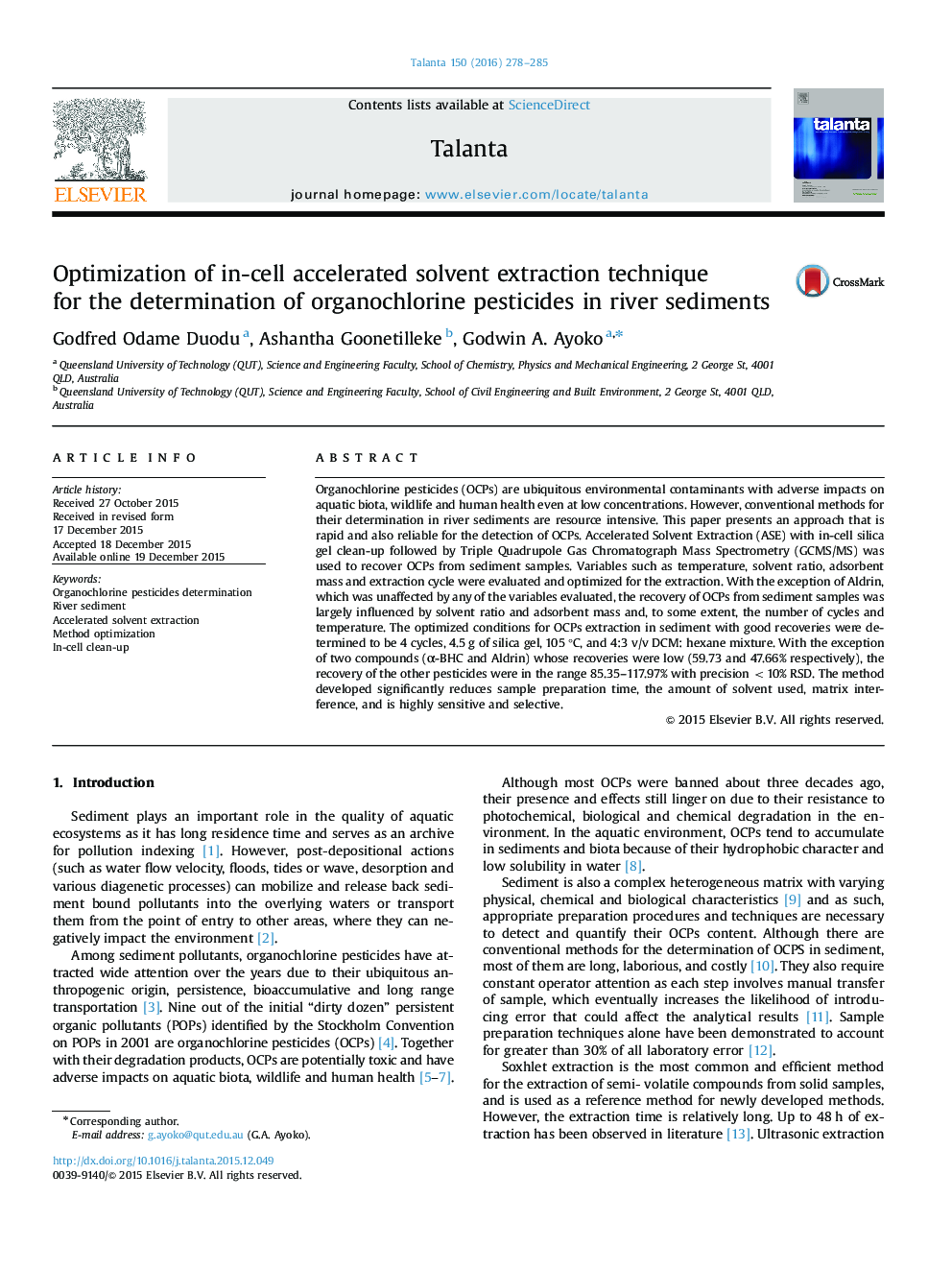| Article ID | Journal | Published Year | Pages | File Type |
|---|---|---|---|---|
| 1242172 | Talanta | 2016 | 8 Pages |
•A single extraction and clean-up step for OCP determination in sediment is described.•The method was optimized with design of experiment (DoE).•Good accuracy and precision were obtained for all but two of the OCPs studied.•Significantly reduces sample preparation and is highly sensitive and selective.
Organochlorine pesticides (OCPs) are ubiquitous environmental contaminants with adverse impacts on aquatic biota, wildlife and human health even at low concentrations. However, conventional methods for their determination in river sediments are resource intensive. This paper presents an approach that is rapid and also reliable for the detection of OCPs. Accelerated Solvent Extraction (ASE) with in-cell silica gel clean-up followed by Triple Quadrupole Gas Chromatograph Mass Spectrometry (GCMS/MS) was used to recover OCPs from sediment samples. Variables such as temperature, solvent ratio, adsorbent mass and extraction cycle were evaluated and optimized for the extraction. With the exception of Aldrin, which was unaffected by any of the variables evaluated, the recovery of OCPs from sediment samples was largely influenced by solvent ratio and adsorbent mass and, to some extent, the number of cycles and temperature. The optimized conditions for OCPs extraction in sediment with good recoveries were determined to be 4 cycles, 4.5 g of silica gel, 105 °C, and 4:3 v/v DCM: hexane mixture. With the exception of two compounds (α-BHC and Aldrin) whose recoveries were low (59.73 and 47.66% respectively), the recovery of the other pesticides were in the range 85.35–117.97% with precision <10% RSD. The method developed significantly reduces sample preparation time, the amount of solvent used, matrix interference, and is highly sensitive and selective.
Graphical abstractFigure optionsDownload full-size imageDownload as PowerPoint slide
